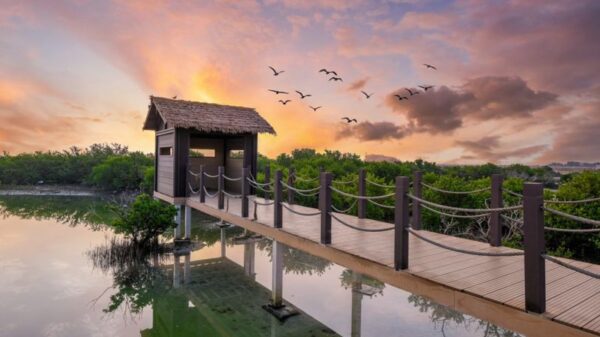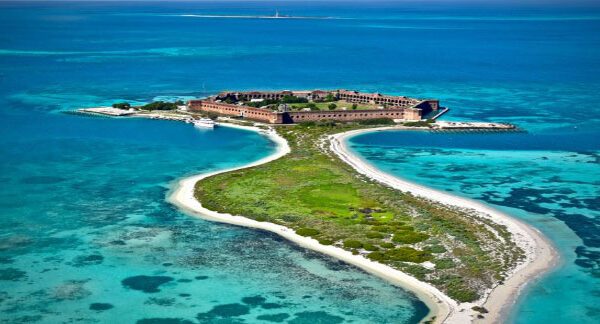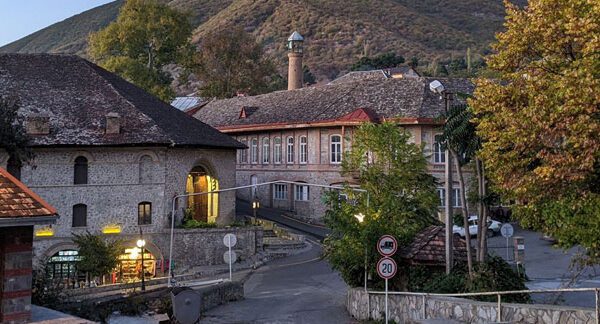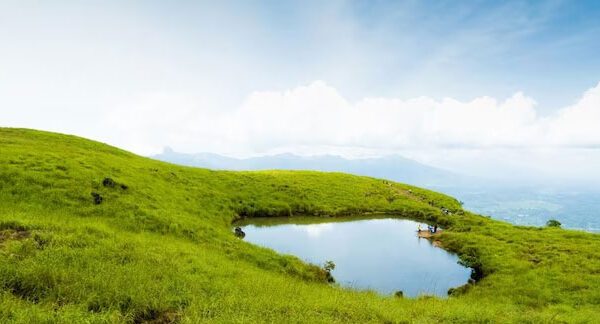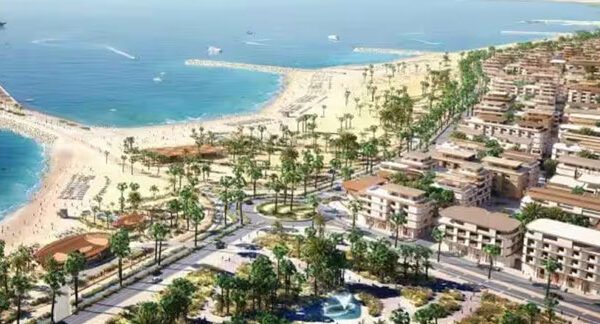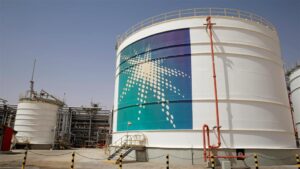Terraced earth buildings with ancient charm into a traditional village
The first time I see Fujian Tulou, I will definitely be shocked.
The early morning mist has not completely dissipated, and against the backdrop of the layers of terraced fields, five giant buildings built on the mountain come into view – this is the Tianluokeng Tulou Group in Nanjing County, Zhangzhou City, Fujian Province.
Fujian Tulou is a large-scale surrounding building made of rammed raw soil. It is mainly distributed in the mountainous areas of southwestern Fujian in my country. It has a unique construction form and is known as a treasure of traditional Chinese dwellings. The Tianluokeng Tulou Group is an important representative of Fujian Tulou, consisting of 4 circular tulou and 1 square tulou.
Standing on the observation deck in the village and looking into the distance, the five earthen buildings are scattered in an orderly manner. No matter which one is moved, it will destroy the harmonious beauty and visual coordination in front of you.
Tianluokeng Village, where the Tulou Group is located, is not large. Five tulou, green hills and terraced fields constitute the main features of the village. Most of the villagers are surnamed Huang, and they have lived together for more than 300 years.
Regarding the origin of tulou, the current mainstream view is that people in the Central Plains moved south to escape the war. The defensive architectural features of the tulou confirm this, and a tulou is a large fortress. From the outside, tulou generally have 3 or more floors. The thickness of the only door can reach more than 10 centimeters. Some are reinforced with iron plates on the outside of the door. Many tulou are also equipped with observation decks on the top floor, which can prevent theft and prevention. Animals, earthquake resistance, water and fire hard to invade. From the inside, the tulou space is open and sunny. If you store food in advance, you can meet people’s living needs in a short period of time even if you don’t go out.
Huang Hanmin, the consultant chief architect of Fujian Architectural Design and Research Institute, said that people often equate tulou with Hakka tulou. The reason for this statement is that after the Hakka people migrated to Fujian, they did build a series of tall tulou for defense. Because the Hakka tulou was discovered earlier and was widely publicized, the saying of the Hakka tulou was deeply rooted in the hearts of the people. In fact, there are not only Hakka tulou, but also southern Fujian tulou.
Among the tulou buildings in Nanjing, the Tianluokeng tulou group has a large number of residents and a strong atmosphere of life. Here, people can still observe the authentic life in the tulou.
Pushing open the thick wooden door of the tulou, it seemed to enter a small world of its own. At 8 o’clock in the morning on weekends, people are chatting in twos and threes at the door; the elderly pick fresh vegetables from the vegetable field, the middle-aged people are busy preparing the family’s breakfast, the children move out of the stools and start doing homework… or a round or square space Inside, there are scenes of flowing life, full of warm fireworks.
There is a wooden board in front of many people’s doors, and there are souvenirs with elements of earth buildings on it: dried bamboo shoots, dried plum vegetables, hand-woven bamboo crafts… Often passing tourists stop to choose. Villagers told reporters that the local people have been farming for hundreds of years, working at sunrise and resting at sunset. However, as more and more tourists come to Tianluokeng Village, they now have a tourism business at their doorstep.
“Doing Dafu” is one of the most lively days in the village. It is usually held every three years, usually after the autumn harvest. At this time, clans from other places will come back to reunite. The villagers cook delicious food and do social dramas. In one after another rural drama, people celebrate good weather and pray for happiness and well-being. In fact, Tulou people’s expectations for a better life are already revealed outside the building. The names of the five buildings—Hechang, Buyun, Ruiyun, Zhenchang, and Wenchang respectively correspond to the couplets on the door, full of the builders’ hopes for the family.
Among the five earth buildings, the Buyun Building is the earliest existing one and the only square building. In fact, the round building is an evolved version of the square building. The round building can try to ensure that the area of each room is roughly the same, and the family room also reduces the disputes caused by the size of the house.
Walking through the village, the cobblestone country roads are full of vitality. The earth building under the sunlight exudes a touch of orange-yellow warmth. If you zoom out the camera and look down from the sky, huge, square or round earth buildings, with the color of soil, are scattered among the mountains and rivers in the deep green, like pearls in the long river of time. Witnessing the changes of history, it also tells the long years of Chinese traditional culture.

